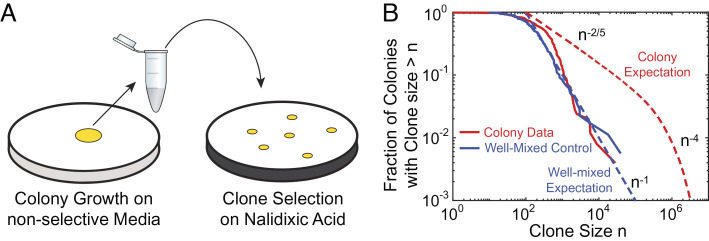Fig. 1.
Fluctuation test in bacterial colonies reveals a distinct clone size distribution at low frequencies. (A) Fluctuation test on 234 E. coli colonies that were grown for 2 d, completely harvested, and then plated on nalidixic acid. The size of clones corresponding to resistant mutations was determined by counting the number of CFUs on selective plates. (B) Fraction of the sampled colonies carrying at least n resistant mutants (red solid line) in comparison with the well-mixed control (blue solid lines). The blue dashed line corresponds to the classic Luria–Delbrück distribution for well-mixed populations (n−1) (48), while the red dashed line corresponds to large clones found in colonies n−2/5 and n−4 regimes, corresponding to so-called “bubble” and “sector” patterns that were previously characterized (37).

